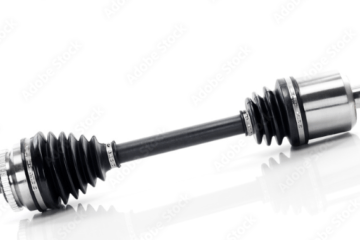The internal combustion engine is a marvel of engineering, but it’s nothing without air. Just like you and me, it needs to breathe to function. And that’s where the air intake and exhaust systems come in, playing a vital role in this mechanical ballet.
The Air Intake: Gulping in Life-Giving Oxygen
Imagine your engine as a hungry beast. The air intake system is its lungs, responsible for supplying the fresh oxygen it needs to survive. Let’s break down its key components:
- Air Filter: The air intake system begins with the air filter, which prevents contaminants such as dust and debris from entering the engine. A clean air filter is essential for optimal engine performance.
- Mass Airflow Sensor (MAF): The MAF measures the amount of air entering the engine and sends this information to the engine control unit (ECU). The ECU uses this data to adjust the air-fuel mixture for combustion.
- Intake Ducting: Think of this as the windpipe, channeling the filtered air towards the engine. It’s often made of plastic or metal and can be shaped for optimal airflow.
- Throttle Body: This butterfly-valve regulates the air intake, acting like a dimmer switch for the engine’s power. It’s controlled by your gas pedal, opening wider as you press down, and closing partially during engine braking.
- Intercooler (Optional): In some cars, especially turbocharged ones, a hero named intercooler steps in. It’s like a built-in air conditioner, densifying the air by lowering its temperature. This packs more oxygen into each gulp, leading to better performance and efficiency.

The Exhaust: Exhaling the Burnt-Out Breath
Once the air has fueled the combustion party, it’s time to let the smoke out. The exhaust system whisks away the burnt gases and harmful byproducts, keeping your engine clean and the air breathable. Here are its key players:
- Exhaust Manifold: This is the hot zone, collecting the hot exhaust gases from each cylinder and channeling them into a single pipe. It’s made of heat-resistant materials like cast iron to handle the inferno within.
- Catalytic Converter: This unsung hero is the environmental guardian of the car. It uses precious metals to convert harmful pollutants like carbon monoxide and hydrocarbons into less noxious gases before they’re released into the atmosphere.
- Exhaust Pipes and Muffler: Think of these as the tailpipe’s ancestors. They channel the gases away from the engine and towards the rear, while the muffler acts like a silencer, calming the roar of the exhaust into a more civilized hum.
- Oxygen Sensors: These watchful eyes are strategically placed in the exhaust stream. They monitor the oxygen content in the exhaust gases and send that data back to the ECU (engine control unit), which then adjusts the air-fuel mixture for optimal combustion.

Keeping the Machine Breathing Easy
Just like our own lungs, the air intake and exhaust systems need regular care to function at their best. Here’s how you can keep your car breathing easy:
- Regular air filter replacements: Consult your owner’s manual for the recommended intervals, but generally, every 12,000 miles or once a year is a good rule of thumb.
- Inspect the intake ducting for leaks or cracks: A damaged duct can allow unfiltered air to enter, causing engine problems.
- Listen for unusual exhaust noises: A loud muffler or hissing sound could indicate a leak or other issue.
- Don’t ignore the check engine light: It might be related to an air intake or exhaust sensor issue.
By understanding and caring for these vital systems, you’ll ensure your car breathes easy, runs smoothly, and keeps the air clean for everyone. So next time you pop the hood, remember: it’s not just about metal and wires; it’s about the delicate dance of air that keeps the whole machine alive.



